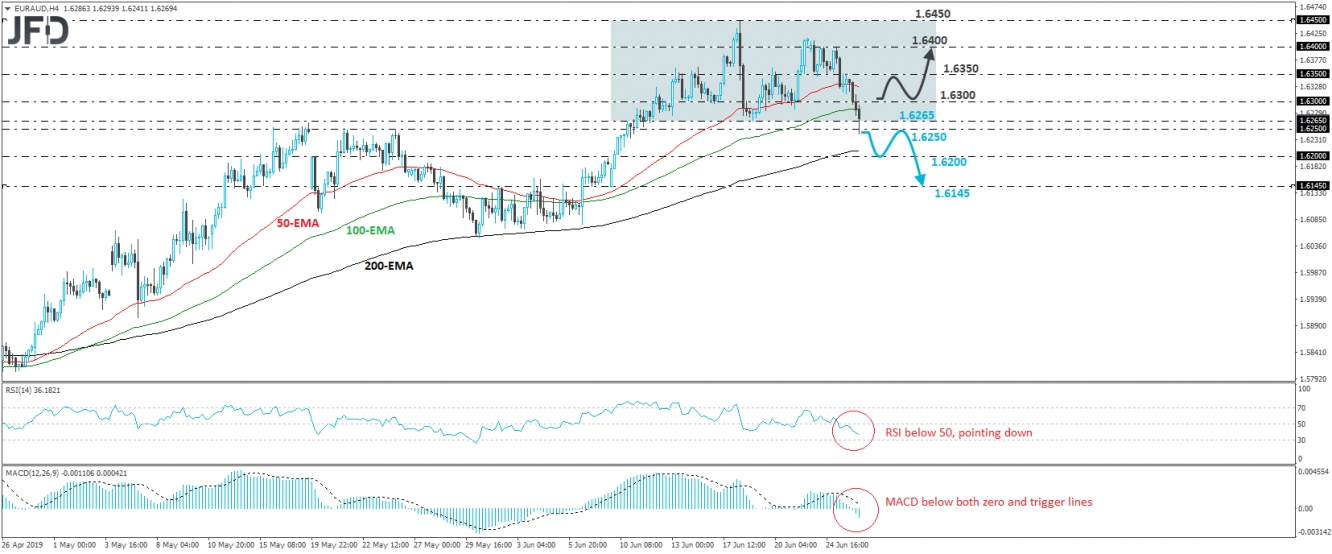EUR/AUD traded lower during the European morning Wednesday, breaking briefly below the key support territory between 1.6250 and 1.6265. However, it was quick to rebound and return above that zone. The 4-hour chart suggests that the rate entered a consolidation phase on June 11th, oscillating between the aforementioned zone and the 1.6450 resistance. Thus, in the absence of a clear trending structure, we prefer to stay neutral for now, despite the latest negative wave.
We would like to see another, and more decisive, attempt to break below 1.6250 before we start examining whether the outlook has turned negative. Such a break could signal the completion of a failure swing top formation and may initially pave the way towards the 1.6200 area, which is fractionally above the inside swing high of June 7th. The rate could rebound somewhat after testing that hurdle, but as long as a potential recovery stays limited below 1.6250, we would still see a decent chance for the sellers to recharge. The upcoming negative leg may result in the break of the 1.6200 area, something that could see scope for extensions towards the 1.6145 hurdle, marked by the low of June 8th.
Taking a look at our short-term oscillators, we see that the RSI lies below 50, points down and looks to be heading towards 30. The MACD lies below both its zero and trigger lines, pointing down as well. These indicators suggest that the pair may have the necessary momentum to overcome the 1.6250/65 zone, and thereby travel further down.
On the upside, a break above 1.6300 could signal that traders want to keep the rate range-bound for a while more. EUR/AUD could then recover towards the 1.6350 level, defined by an intraday swing peak formed yesterday, the break of which may open the path towards yesterday’s highest point, at around 1.6400. In order to start examining whether the outlook has turned positive again, we would like to see a clear daily close above 1.6450, a move that would confirm a forthcoming higher high on the daily chart.

